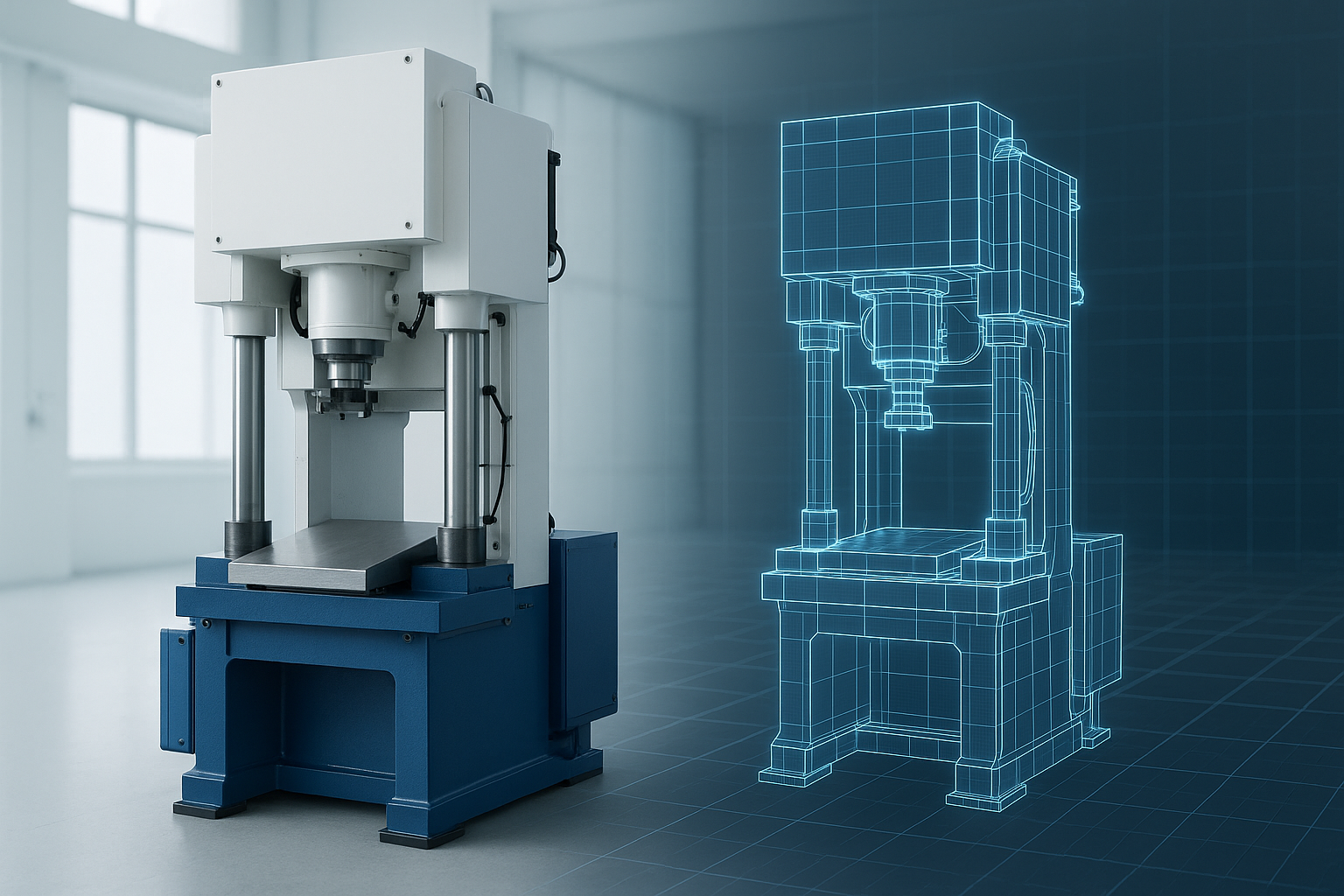The digitalization of industrial production is progressing rapidly – and with it, one concept is becoming increasingly important: the digital twin. Especially in the sheet metal forming industry, where precision, efficiency and flexibility are essential, this technology opens up completely new possibilities. But what exactly does the term mean and what specific benefits does it offer in practice?
What is a digital twin?
A digital twin is a virtual image of a physical object, process or system. In the manufacturing industry, these are often digital models of machines, production lines or even complete manufacturing processes. These digital twins not only reflect the current status, but also enable continuous optimization during operation by combining sensor data, simulations and AI-supported analyses.
Areas of application in sheet metal forming
Sheet metal forming is a complex process that is heavily dependent on factors such as material properties, tool geometry and machine settings. Even the smallest deviations can have a significant impact on product quality or tool life. This is where digital twins come into play:
- Virtual process development and optimization
Digital twins enable the simulation of forming processes even before the first sheet metal is manufactured. This not only saves time, but also material and tool costs. Through precise modeling, optimal parameters for pressure, speed and tool path can be determined – without trial and error in the real world. - Predictive maintenance
By continuously monitoring the condition of the machine, Digital Twins can detect malfunctions at an early stage. This allows maintenance measures to be planned and unexpected failures to be minimized. This not only increases system availability, but also reduces maintenance costs in the long term. - Quality control in real time
A digital twin can evaluate data from sensors and production machines in real time. This allows deviations in the production process to be identified and corrected immediately. This increases product quality and reduces rejects. - Training and knowledge management
Employees can be trained in realistic scenarios with the help of digital twins – without risk to man or machine. At the same time, valuable process knowledge is digitally documented and secured for the long term.
Advantages at a glance
- Shorter development times
- Reduced material and energy consumption
- Greater process reliability
- Short downtimes
- Improved product quality
- More efficient use of resources
Conclusion
At a time when efficiency and flexibility are decisive for competitiveness, digital twins offer a clear advantage for the sheet metal forming industry. They connect the physical with the digital world and make production more transparent, adaptive and future-proof. Companies that invest in this technology today are laying the foundations for the intelligent and sustainable production of tomorrow.
Any questions?
Do you have questions about our cooperation? Then take a look at our cooperation page. Our experts will also be happy to advise you. Simply get in touch!
